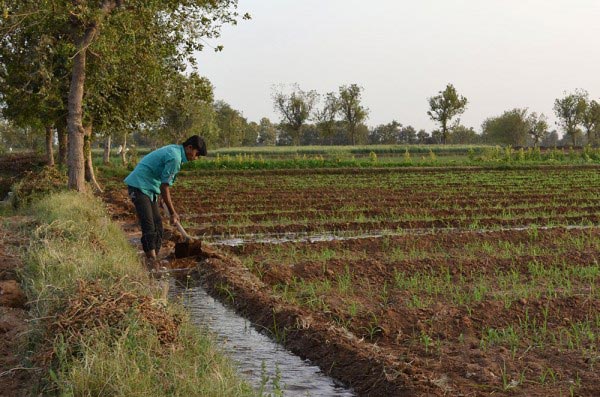It is a unique challenge of our generation that many in the developing world have cellular phones and TVs, but lack reliable access to water. Odd, perhaps, given that water is marketed as essential for life, a human right, and heart rending pictures of women and children walking miles to fetch water are routinely flashed to tug at everyone’s heart strings.

Flood irrigation in India. More efficient use of water for agriculture is key to protecting and conserving water supplies. Photo: Jeremy Hinsdale
In many developing countries growing populations and limited investment in infrastructure are leading to declining access to water. Even in the United States, the impact of droughts on urban supply is larger today than ever before, as witnessed in the South in recent years.
At current levels of agricultural productivity and water use efficiency, seeing how 9 billion people could be fed and watered by 2050 seems like an insurmountable challenge. The quantity of water used for agriculture dwarfs all other uses–70 percent of water used globally is used in agriculture. The question facing us today is: Can we improve agricultural water access and productivity and as a byproduct improve sustainable access to drinking water for the rural and urban settings?
The answer, based on our research at the Columbia Water Center, is yes.
The improvements can come from a smarter selection of where to grow which crops considering net income, biophysical suitability, and a local water constraint. Economic signals from governments are necessary to promote conservation at the farm level, and the appropriate crop selection. Similarly, regulation to ensure access to water is essential. Investments in rural and urban water infrastructure lag globally, and need to be promoted with a goal of prioritized and reliable access. In many places, multiple re-use of the same water through collection and treatment, and rethinking flood control as a source rather than a disposal issue will need to evolve. Technical innovation will follow if the right incentive structures emerge.
Today, on World Water Day 2012, we at the Columbia Water Center are optimistic that such a future is within our reach. People across the world have come to understand that we cannot take water for granted any longer, and it is our hope that we can unite behind this cause, not just today, but every day and pledge to make real, lasting change together.
Upmanu Lall is director of the Columbia Water Center.
Source: http://blogs.ei.columbia.edu/
Dear User/Visitor! Please, answer on our questions: tick off one of the positions – your answer will make us able to improve our site and make it more interesting and useful!

